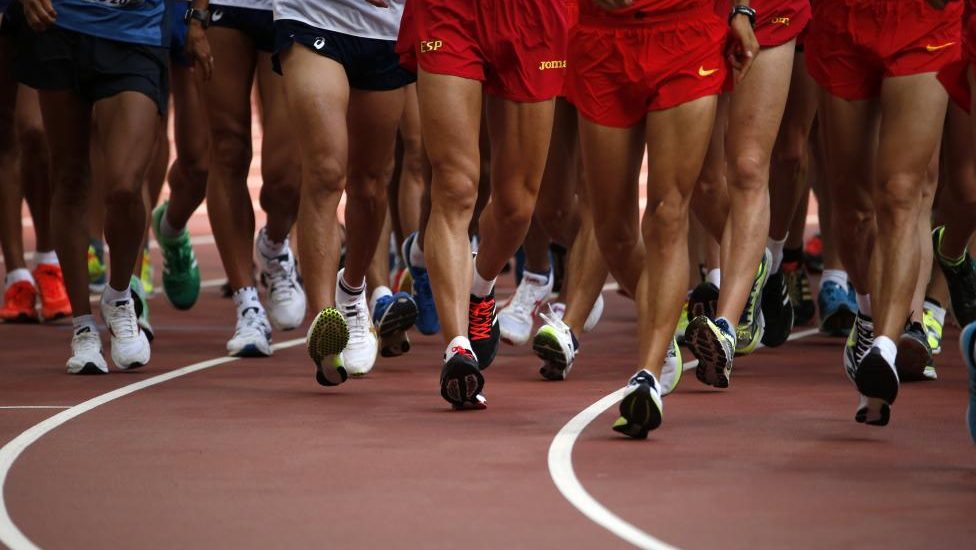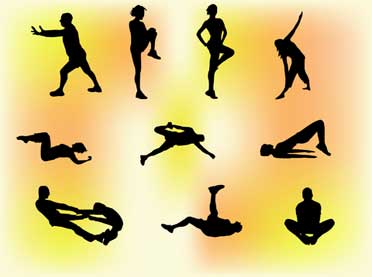In a large number of sports disciplines, running speed is a significant factor in performance, and many people consider this physical quality not very workable due to the genetic aspects that determine it (muscle typology, morphology, tendon length). , etc.). Although the ability to run quickly is largely innate, it can be improved by training several factors such as running technique, muscle strength, plyometric performance, and nutrition. improve the ratio of weight and power.
For many years, the main criterion for evaluating an athlete’s speed has been linear sprint performance. Even nowadays, we regularly hear sports commentators on television talking about the 100m time of such a football or rugby player, when they rarely run more than 10 or 20 meters in a straight line without bumping into an opponent. In team sports, the ability to accelerate and change direction is much more important than the maximum speed or duration it can sustain; not forgetting that running with the ball in your hands or feet affects the overall balance of the race.

Race comparison in sprint, basketball and rugby
Therefore, approaches to speed development must consider the types of movement specific to the discipline without neglecting the importance of fundamentals in terms of racing mechanics and placement. Even if you run fast, you must first train to run fast, there are often weightlifters or weightlifters who manage to compensate for the average technical level with significant muscle strength developed by intense work. in bodybuilding, and achieve very high lap times of less than 30 or 40 meters.
After a brief biomechanical analysis of various aspects of sprint racing and team sports, we will be primarily interested in enhancing kettlebell work in prevention and approach to performance.
Running action
Running is a fast movement, alternating horizontal leaps from one leg to the other, known as “steps.” This motor action relies on the ability to effectively coordinate movements of the legs, arms, and trunk to create forward momentum without losing balance or deforming the spine and pelvis. Running speed is directly related to the length and frequency of strides, which result from the contraction of many muscles. While performance patterns may vary by morphology, it is generally the athletes who are the fastest that produce the strongest forces.
Activating muscles and legs
To put it simply, we will break the step into two phases: a support phase, during which one of the athlete’s two feet touches the ground; and a suspension phase in which neither foot touches the ground.

For pedagogical and technical learning reasons, which are not the subject of this article, many authors and trainers divide the support phase into 3 phases, but in reality this phase corresponds to plyometric action, which includes the goal of doing a “damping phase” in plyometric sense of the term is as short as possible, in order to take advantage of the restoration of elastic energy and, possibly, the action of the myotatic reflex. For more information on plyometrics and how to work with it, read the article “Plyometrics and Muscle Relaxation”.
It would seem that a simple movement is a complex movement that requires fast and rhythmic flexion and extension at large amplitudes of all joints of the lower extremities. You also need to be able to withstand hits from the ground that can be 4 times the body weight of elite sprinters racing at full speed on the tartan track. Given the one-sided and alternating nature of the race, “technical” and “balanced” aspects are the main factors of effectiveness in stabilizing the ankle, hip, pelvis and trunk, without forgetting the compensating action of the upper limbs. Almost all muscles of the body with an extremely complex motor pattern are involved in the race, where for the same muscle group the cycles of maximum contractions and relaxation, also maximum, last only a few hundredths of a second. For example, the best sprinters are able to take 4.5 to 5 steps per second during the maximum speed phase, which they reach after about fifty meters of the race.
The following diagrams show the activation of different muscle groups of the lower extremities during a complete stride cycle for the same leg. When we talk about stride length or frequency, we usually mean the alternation of the right and left supports. Here, for a more holistic view, the right leg support phase corresponds to the 0-25% interval, and the suspension phase corresponds to the 25-100% interval. The left leg support is restored by about 50%.
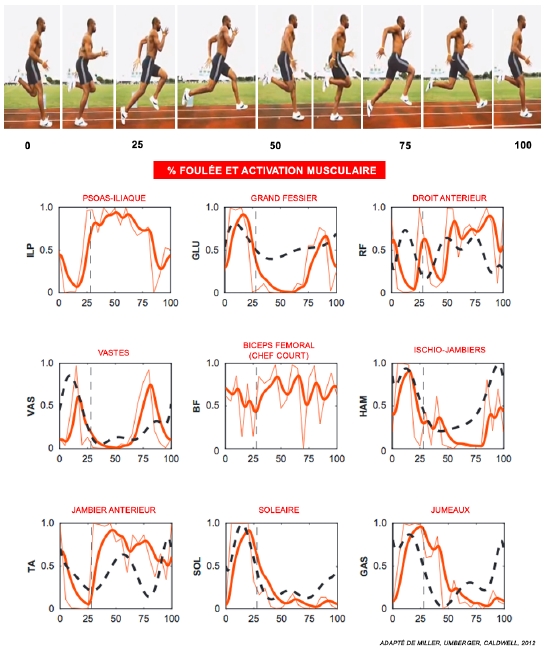
Contrary to popular belief, the quadriceps muscles are little involved in general motor actions after departure. They intervene powerfully during the push on the starting blocks to overcome the momentum, but gradually their role will be to stabilize the knee during impacts on the ground to avoid any deformation of the posture and allow the elastic energy of the tendon and fascia to be absorbed. By way of illustration, Asafa Powell’s patellar tendon stiffness coefficient (best result 9.72 seconds per 100 m) is such that a force of 114 kg is required to deform 1 cm, while an average force of about 40 kg is sufficient for an individual. The real engines of the race are the muscles of the rear chain, and to be sure, it is enough to observe the physique of the sprinters and note the significant development of the gluteal muscles, hamstrings and calves.
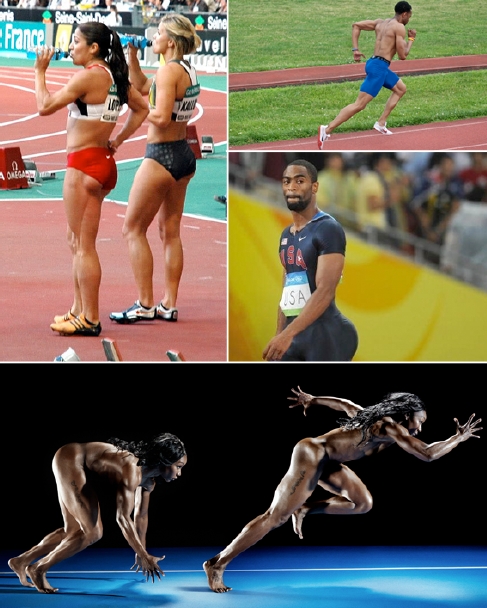
The importance of the posterior muscle chain (glutes, hamstrings) in sprinters
The hips and hamstrings are responsible for hip extension, which creates horizontal force when resting on the ground. According to recent research, it seems that the driving action of the gluteus muscles is more important during the support and hamstring phases during the suspension phase, primarily to bring the leg forward (knee flexion) and then accelerate hip extension in the last part of the stride. During the impact, the hamstrings stabilize the pelvis, preventing it from tilting, as well as falling forward of the shoulders, which can slow down the movement. In addition, due to its biarticular structure and anatomical organization, each of the muscles that make up the hamstrings plays a different role: the long head of the biceps of the femur is the one that lengthens the most (about 12%), the semi-dendine is the one that is registered. the fastest elongation rate and the semi-membrane that absorbs (eccentric) and produces (concentric) the greatest force.
Hip flexors (psoas, ilium, anterior rectum, fascial tensor, anterior fibers of the small and medium buttocks, sartorius, small and medium adductor, pectin and lean) are often forgotten or ignored, while their action is directly affected on the length and frequency of steps. Psoas, which is the main hip flexor, is strongly activated during the suspension phase, between 25 and 75% of the stride. It projects the knee forward, while the hamstrings bring the leg back. The following figure shows a horizontal sectional view of the size comparison of the lumbar regions of Asafa Powell and Nobuharu Asahara, who have the best personal records at 100m 9 ”72 and 10” 02. Powell’s pseudo is two or three times larger than Nobuharu’s, which partially explains their difference in sprint performance.
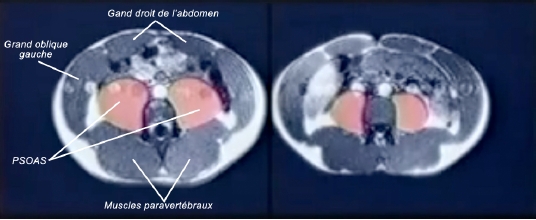
Comparison of lumbar regions of Asafa Powell (9.72 s per 100 m), left and Nobuharu Asahara (10.02 s per 100 m), right
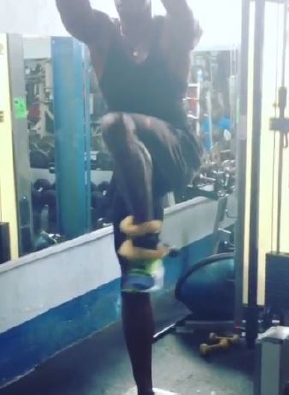
Usain Bolt works with hip flexors
Like the hip flexors, the ankle and foot muscles are often overlooked by many non-athletic trainers. The plantar flexors, made up of the soles and twins (calves), contribute significantly to the absorption of ground impact forces and their recovery for better running economy and efficiency (plyometrics and muscle relaxation).
The dorsal flexors (foreleg, extensor of the big toe, common extensor of the toe, and anterior peroneus) allow anticipation at the end of the suspension phase by optimally positioning the foot to pre-activate the rear chain to prepare the spring effect. At speeds in excess of 44 km / h, poor foot position significantly increases Achilles tendon stresses with tensile forces, which can increase an athlete’s body weight up to 10 times and thus increase the risk of injury.
Finally, without effective covering of the trunk with the abdominal muscles, muscles of the sacro-lumbar mass, paravertebral muscles, large dorsal muscles and muscles of the trapezium, as well as without the action of the upper limbs to balance and compensate for forces, a race at maximum speed would be impossible.
Sprint and strength
The best sprinters ran 100 meters in less than 10 seconds in about 44 strides. If we leave aside the reaction phase for a while, their performance will be broken down into 4 phases, the duration and characteristics of which vary from one athlete to another, depending on their morphology and their properties of explosiveness and speed.
Launch stage – from 0 to 10 m
When starting in a squatting position, the best sprinters can develop a traction force of about 150 kg at an acceleration of 9.8 m / s2 or almost 1 g and reach 75% of their speed after a maximum of 7 steps. These are essentially the qualities of explosive strength that prevail in this stage, and in particular the speed at which peak strength is reached. Ground contact time ranges from 150 to 200 milliseconds and stride length increases from 1.00 to 1.70 m.
Acceleration phase – 10 to 40 m
After the initial push, the athlete gradually straightens, which will position the lumbar belt in a more comfortable working angle and accelerate the pace of steps. At 40 meters, the cadence is 4 to 4.5 per second with a length of 2.00 to 2.40 meters. Ground contact time ranges from 100 to 140 milliseconds.
Maximum speed phase – from 40 to 70 m
After 6-7 seconds of racing, the athlete will reach the maximum speed, which at best will be about 44 km / h. At this moment, only the qualities of speed and reactive force are expressed. Ground contact times are in the range of 80 to 90 milliseconds and the stride is 4.5 to 5 per second and the length is 2.40 to 2.70 meters. Sheathing force and the effectiveness of the plyometric system are essential to absorb impact forces and maintain optimal technical placement.
Deceleration phase – from 70 to 100 m
From 70 meters, speed will begin to decrease due to depletion of creatine phosphate and a decrease in intramuscular pH, which will harm the contraction of muscle fibers and which is caused by the accumulation of hydrogen ions from anaerobic glycolysis.
Again, contrary to popular belief, sprint is not an exclusively anaerobic alatic effort. Anaerobic glycolysis is requested from the first meters, and after 6 seconds of work in national sprinters, the concentration of lactates in the blood exceeds 8 mmol per liter of blood, while the theoretical anaerobic threshold is set at 4 mmol per liter. In the case of repeated efforts, as in most team sports, this figure can exceed 20 mmol per liter after a dozen sprints, which will inevitably lead to a decrease in performance. By the way, dairy work is not the most suitable solution for increasing speed endurance or “body” as we often hear … but that’s another discussion.
Key differences between sprint and running in team sports
Although the mechanical and technical principles of fast running are the same for different sports, the conditions under which race speed is expressed change: surface, shoes, timing accuracy. , distance, direction, ball movement, repetitive efforts, etc.
Starting position
The main difference between starting in sprint, rugby or basketball is the starting position, which greatly affects acceleration. The use of starting blocks allows better use of the extensor muscles of the lower extremities and gives more explosive starts. In addition, in team sports, athletes are rarely in an optimal starting position and are often forced to move, either turning or avoiding an opponent.
Racing technology
Running technique will be broken when it is necessary to control the ball or avoid opponents. In addition, the tactical requirements will require the athlete to be attentive to the development of the game, so he will not be able to constantly take a position that is conducive to acceleration and speed races. Long strides can be a hindrance when braking and changing direction.
Distance and running dynamics
In team sports, it is very rare for an athlete to cover linear distances of more than 20 meters at full speed. Usually in the first 3-5 meters, the difference is in interception or interval.
Therefore, training should take into account the specifics of each discipline and offer training solutions that meet the goal of the competition. For example, in rugby, working with a change in standing, lying, back, side, with or without the ball at a distance of 5 to 10 meters is much more important than working at a maximum speed of 40 by 60 meters, especially when the athlete has only two workouts per week. Strength training should also reflect these differences. For example, soccer or rugby players tend to have more quads and adductors than sprinters because of the greater variety in muscle requirements (slowing down, speeding up, changing direction, physical fights), but also because they have to store more energy (glycogen). to be able to last throughout the entire match.
Race dynamics and hand work in rugby
Comparison of Cristiano Ronaldo’s race with a sprinter race
Bodybuilding Goals
How often, bodybuilding training will have a dual purpose of preventing injury and improving performance by optimizing joint mobility, dynamic flexibility and strength generation in motor, synergist and stabilizer muscles.
Injury prevention is a complex topic that is beyond the scope of this article. However, it is important to remember that trauma can occur suddenly (accident, fall, etc.) or be the result of the accumulation of negative factors over a more or less prolonged period, including Causes, simple or multiple, can be ecological, structural or methodological. origin: inadequate equipment, muscle weakness, lack of mobility, old injuries, technical errors in the performance of competition gestures or exercises. training, poor workload and recovery phase management, etc.
Even today, the concept of bodybuilding with the added stress of coaches and athletes is not universal, and everyone has their own vision of how to make technical work and physical work coexist. The concepts of transfer and specificity have taken a very important place in the training of athletes, and many are looking to integrate physical work into core training to save time and increase efficiency. Despite the desire to succeed, this approach is often taken to the detriment of bodybuilding, when coaches invent so-called “functional” exercises to get closer to the competitive effort and forget about the main goals of strength work, namely the number of myofibrils (muscle development) and improved recruiting and synchronization of motor units (development of nervous factors). In addition, in the case of trained athletes, the increase in energy substrates and mitochondrial density (muscle endurance) will always be limited by the amount of muscle available.
Bodybuilding work combined with technical work and the development of plyometric qualities will be aimed at strengthening:
- flexor and extensor muscles of the ankle and foot (especially the calf and foreleg) to optimize the support phase;
- hip extensors (glutes and hamstrings) to increase momentum and lengthen stride;
- hip and knee flexors (lumbar and hamstrings) to increase cadence;
- the extensors of the knee (quadriceps) to increase the explosive force required to launch and improve knee stability during the maximum speed phase;
- extensors and flexors of the shoulder and upper extremities to balance body structure and improve arm action;
- the muscles that flow around the pelvis and trunk (abdominals, sacro-lumbar mass, paravertebral, dorsal, pelvic muscles, etc.) for better transmission and control of forces.
At the end of the day, a sprinter should be fully engaged in bodybuilding and not neglect any muscle group.
Example Weight Training Performed by Elite Sprinters
Carmelita Jeter (2011 world champion and personal best in 100m 10 “69 seconds) and Sean Crawford (200m 2004 Olympic champion and personal best in 100m and 200m 9” 88 and 19 “79 )
Johan Blake Muscle Session (2011 World Champion in 100 meters and personal best in 9 ”69)
Examples of bodybuilding exercises Jimmy Vico (French champion 2013 at a distance of 100 m in 9 “95)
Bodybuilding by Wallace Spearman (personal best 6 “66 x 60 m and 9.96 x 100 m)
and Darvis Patton (personal best 100 m by 9″ 89)
Usain Bolt Leg Work
Even though the exercise techniques in the previous videos are not always perfect, we find that sprinters use a wide variety of relatively common polyarticular and isolation exercises that we find in many bodybuilding programs. Because of their explosive running characteristics, they also involve a lot of weightlifting movements and separate most of the time from right and left work to increase pelvic and lower limb stability.
For a long time, there has been controversy regarding squat size and its relationship to sprint; so many coaches recommend partial executions in order to limit the risk of injury by staying closer to the corners of the race joint and avoiding the overdevelopment of large internal and external ones that can weigh on the leg. However, it is important to note that limiting the depth of squat flexion requires the use of heavier loads to maintain a sufficient level of stimulation, which can increase compression and shear forces in the lumbar vertebrae. In addition, strengthening the muscle chain throughout the entire range also improves its performance in reduced ranges. Finally, the practice of full squatting also allows the hips and ankles to work and maintain articular mobility, which can be interesting in some cases.

Usain Bolt with Biceps, Functional Exercise for Sprinters?
In any case, the correlation between squat strength and running speed is important. This correlation is the greater, the lower the level of knowledge of the athlete. On the other hand, during the final of the Olympic sprint, he will not necessarily be the strongest in the squat, which will win, even if all the athletes present at the starting line can lift half the squat at least 3 times their body weight. This principle is found in most sports that require the quality of strength and speed. For example, in 2005 the English Rugby Federation, RFU, published the following speed and strength standards for their coaches to better guide their players’ training.
The organization of bodybuilding work during the season will depend on the time available, the strengths and weaknesses of the athlete. Some will need to work on their running technique, others will need to build muscle strength or lose fat. When Maurice Greene joined the HSI training group after skipping the American qualifier for the 1996 Atlanta Olympics, he weighed 70 kg. Given his lack of strength, his new trainer John Smith included him in the muscle building program to change his sprinting technique to be more explosive at the start and faster in the second half of the race. Weighing 79-80kg and a new way of running, Maurice Greene dominated the world sprint between 1997 and 2003, being Olympic champion in Sydney and winning all 100m world championships.
In 2003, at the age of 16 and a height of 1.96 m, Usain Bolt ran 200 m in 20 ”13, demonstrating obvious natural qualities in the sprint. Six years later, after expanding his physique, he set a new world record 19 “19.
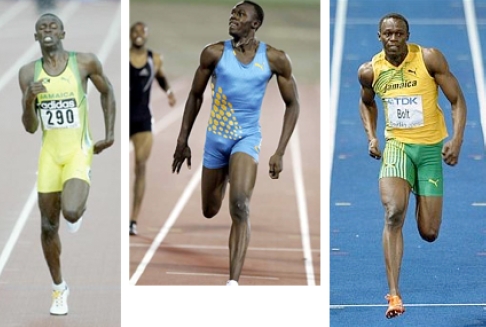
Usain Bolt’s physique evolution between 2003, 2005 and 2009
The benefits of bodybuilding for running are undeniable, however you shouldn’t go overboard and develop too much muscle mass, which can affect your power-to-weight ratio. While there are large size differences among high-level sprinters, we find that most of those who fall below 9 ”80 have a body mass index (BMI) around 24.5.
As for team sports players, in addition to technical sprint work, it is important to develop muscle strength in the lower limbs and especially the muscles of the hind chain, hip flexors and ankles, which often fail because of neglect in training. The work should be aimed not only at developing maximum strength, but also at the amplitude at which it is expressed in order to get the right attitude towards racing and prevent injury. In RDL prevention, glute ham lift (GHD) or Scandinavian hamstrings are excellent exercises for preparing the hamstrings for stretching.
Given the repetitive effort to accelerate, decelerate, and change direction, special attention should also be paid to adductors, abdominals, and sacro-lumbar mass.
Improving the eccentric strength of the hamstrings with the hamstring
Strengthening the buttocks with the “Hip joint” for 2 or 1 leg
Improving flexibility of the hip joint and strengthening adductors
Strengthening the lumbar belt on a low pulley
Rope sprint Dynamic work of the hip and foot flexors
Strengthening the gaiter in front of the car (loose and elastic version is possible)
To illustrate how to organize bodybuilding work to contribute to the speed of the rugby player, we propose the following program during the offseason for 6 weeks. Training volume is important, and this type of exercise will be aimed at experienced athletes with good bodybuilding experience and ample recovery time between sessions. The rugby sessions will have a light intensity of no more than thirty minutes and are dedicated to individual or collective technical work (assists, kicks, hand-to-hand combat, touching) or touching games without contacts. Acceleration work will be done at the end of the session.
Comments on speed and reaction time
Reaction time corresponds to the time between stimulation, which can be visual, audible, or tactile, and activation. In a sprint, this is the time between the detonation of the pistol and the start of the kick-off on the starting blocks. In football, this is the time it takes for a player to analyze the game situation, anticipate the ball’s trajectory and start moving accordingly. Contrary to what we sometimes read, reaction times by themselves are not trainable. The speed of propagation of nerve impulses is constant and cannot be improved. On the other hand, with experience, it is information processing that goes faster until certain actions become reflexes. An experienced boxer will be able to anticipate the hook simply by analyzing the position of the support, pelvis and hips of his opponent, or because he is used to certain sequences of punches. On the other hand, the beginner boxer needs to see the hook move to start dodging. In team sports, it is not uncommon for a player who is considered slow to always participate in matches in the right place due to a better understanding of the game.
Given the importance of experience in anticipation and reaction time, it is important to emphasize its specifics: there is a very high probability that a tennis player will be able to return services at 220 km / h, which is a very average figure for a goalkeeper, but football moves twice as fast as a small yellow ball. Therefore, reaction times are worked out on the field by multiplying the phases of the game and situations specific to those that will occur during the competition. Reacting 2/10 ° late during action in soccer or rugby will result in a 1 or 2 meter difference at the point where the ball falls.
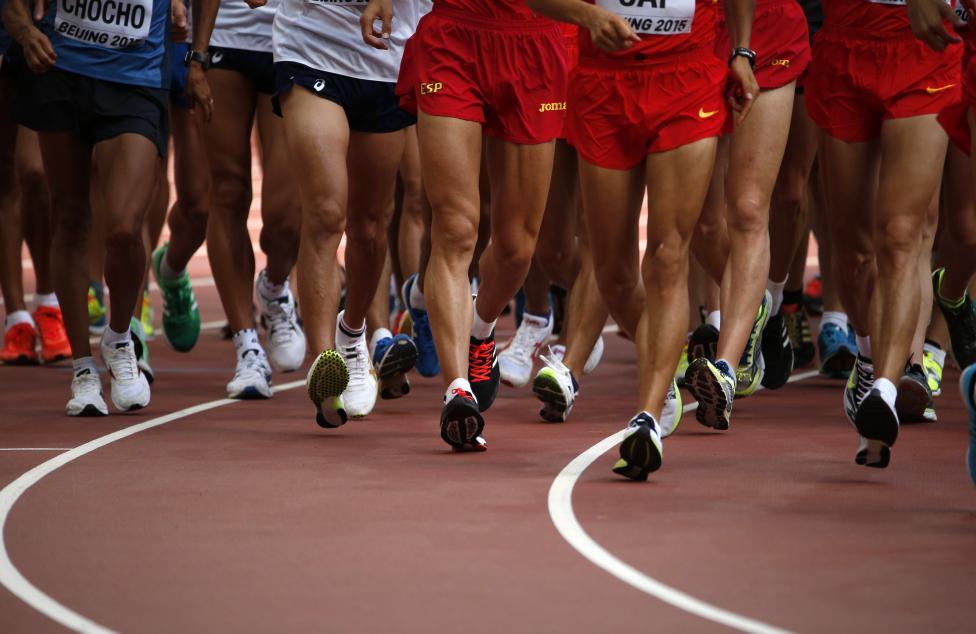
Conclusion
Although speed is a quality largely determined by genetics, it is still possible to improve it using sprint training that combines technique, strength and plyometrics and integrates into a long-term approach. Unfortunately, even today in many collective disciplines in France, speed is considered a constant constant, and most of the training is devoted to the development of the tactical aspects and endurance of the athlete. Speed sometimes comes up in the form of working with a rhythmic scale that is far from generating the driving forces encountered at full speed, or pseudoplyometrics that combine hoop jumping, acceleration and aerobic effort without any control. the quality of the coasters.
Finally, even if speed is not the only determinant of an athlete’s quality; this is what professional rugby is considered fast, but not by sprint specialists.
During this race, the electronics time is 11 to 10 inches. These results must be compared with all Sunday athletes who announce 100 meters under 11 ”00. Among rugby players with sprint training, we note personal records achieved in athletics at Carlin Isles at 10-13 (rugby 7, USA), Toderau Chawanga at 10-27 (South Africa), and Sebastian Karrat at 10 ”37 (France) … What about Jonah Lomu announced at 10 ”80 during his glory?
Finally, if you want to be faster, optimize your strength, plyometrics, weight-to-power formula.


